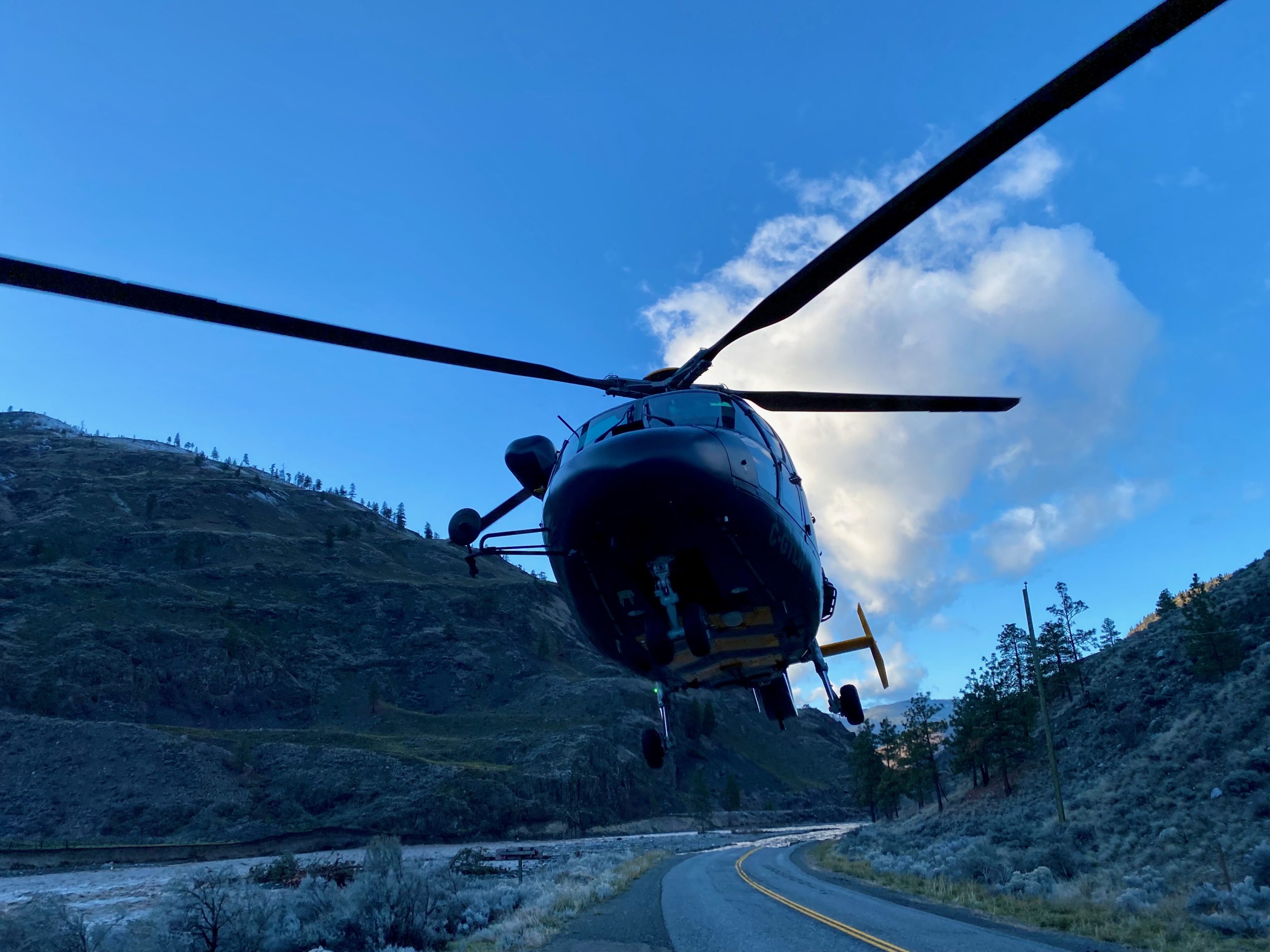Unprecedented torrential rain had inundated Lower Mainland British Columbia for nearly three days, triggering deadly mudslides, severing transportation arteries from Vancouver to the provincial interior and cutting off whole towns before Talon Helicopters was mobilized to begin search-and-rescue missions.
For the next three days, sometimes working on behalf of Emergency Management BC (EMBC) and sometimes on their own initiative, Talon’s crews flew 15-hour shifts to rescue stranded residents, patrol critical infrastructure and perform other missions, according to Talon president Peter Murray.
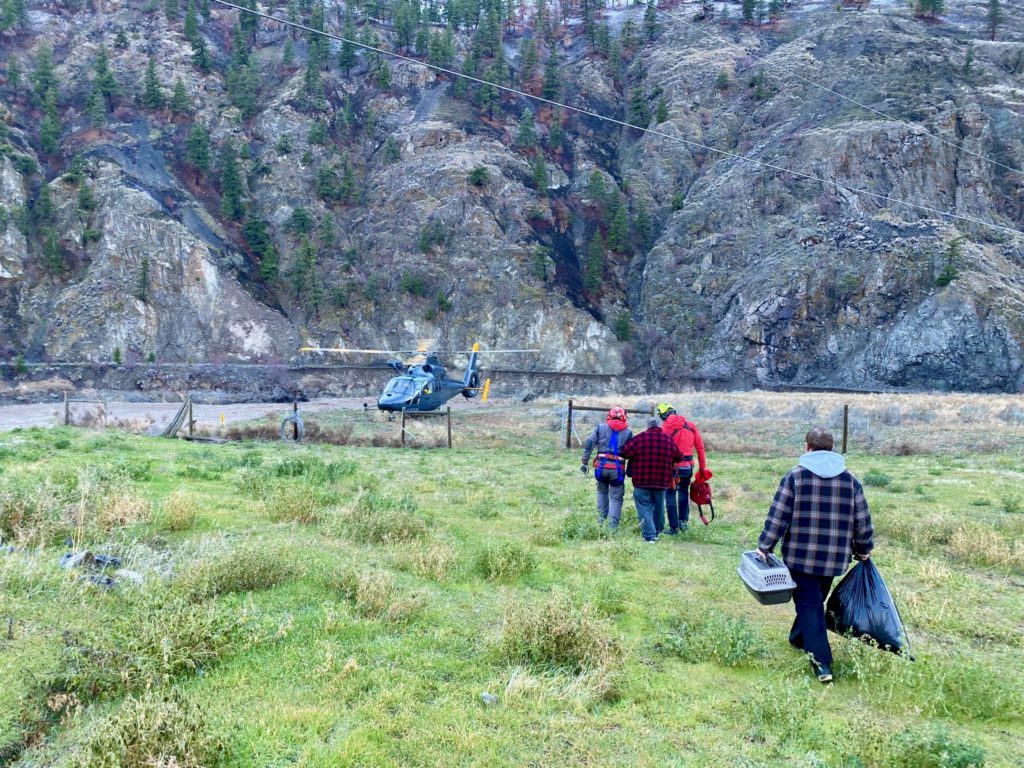
With the flooding from that storm receding and another washout potentially on the way, Murray said EMBC and the provincial government need to improve both emergency preparedness and emergency management response to natural disasters or risk losing more lives in future disasters.
“A flood, in this case, is a slow-motion emergency,” Murray told Vertical in a recent interview. “It was forecast 10 days in advance. Then it starts happening and we already know that these are flood-prone areas. There is no surprise.”
“There are definitely lessons to be learned here,” Murray added. “Although there were assets and volunteers were available to be used on this, they were not implemented by the people in charge. That’s something that needs to be addressed in the future, otherwise lives will be lost. Again, this is a slow-motion emergency and an even slower reaction for how to deal with it by the provincial government. From my perspective, I saw many things that need to be improved in this kind of response.”
The majority of search-and-rescue (SAR) operations in British Columbia are performed by volunteer firefighters, doctors, EMS personnel and other skilled civilians organized and deployed by Emergency Management BC before and during emergency situations like the recent catastrophic flooding.
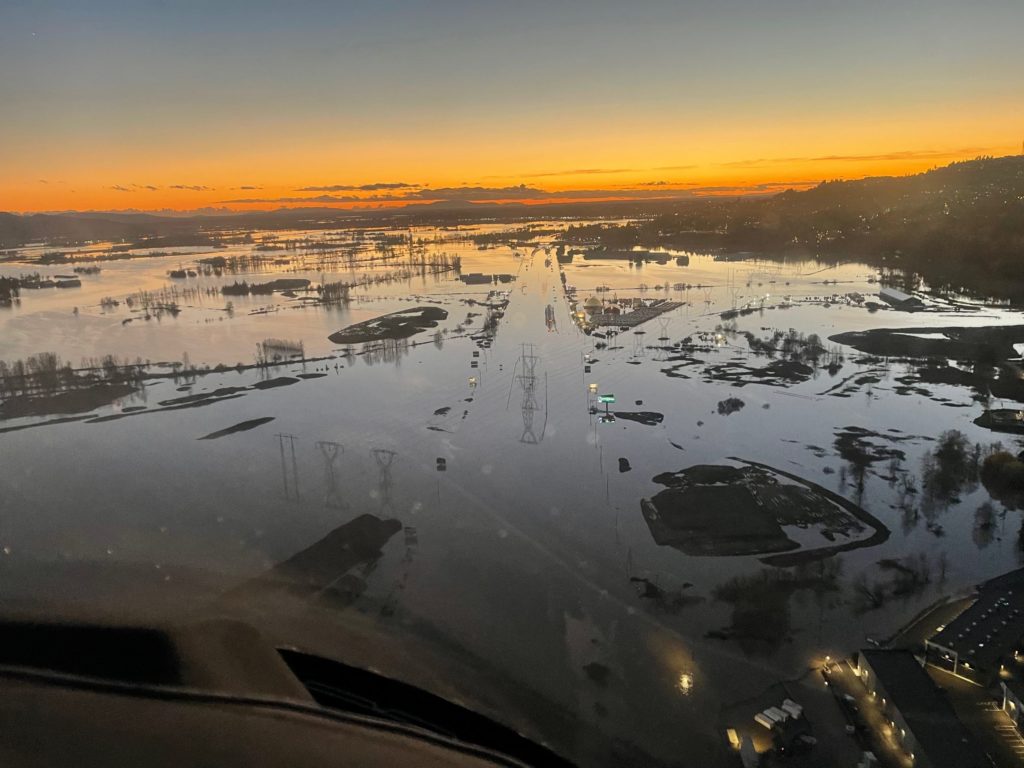
EMBC also tasks SAR-trained commercial helicopter operators to carry out SAR missions. When EMBC gets a SAR call, they contact companies like Talon directly and EMBC reimburses them for the flight time.
Talon is a private commercial helicopter company that trains for SAR operations and routinely volunteers its services during natural disasters and other emergencies. Based in Vancouver, the company has dedicated its own resources to developing rescue systems including an Airbus AS365 N2 Dauphin capable of night hoisting with night vision goggles, one of the only commercial aircraft in the province authorized to do so.
Rain began falling in Lower Mainland British Columbia on Nov. 12, then increased the following day, when flooding became a major issue and began to trigger other catastrophes like mudslides and causing infrastructure to fail. The company was first called on Nov. 14 to perform rescues but EMBC did not follow up, Murray said.
On the same day, the first initial catastrophe struck when two landslides trapped several hundred motorists on a major highway. The Royal Canadian Air Force brought in its CH-149 Cormorant helicopters to rescue the motorists, which Murray said was a mismatch of resources. The 50,000-pound (22,680-kilogram) helicopters are based near Vancouver to perform offshore search-and-rescue and the model is “no good for anything else,” Murray said.
“It’s too big to land on the road, but they did it,” he said. “That’s what the military has around here. People ask me if the Cormorants are lifting people off rooftops and I tell them that the only way Cormorant would get people off rooftops is they’d be coming over, hover overhead and they’d blow them off the roof. It’s got too much downwash.”
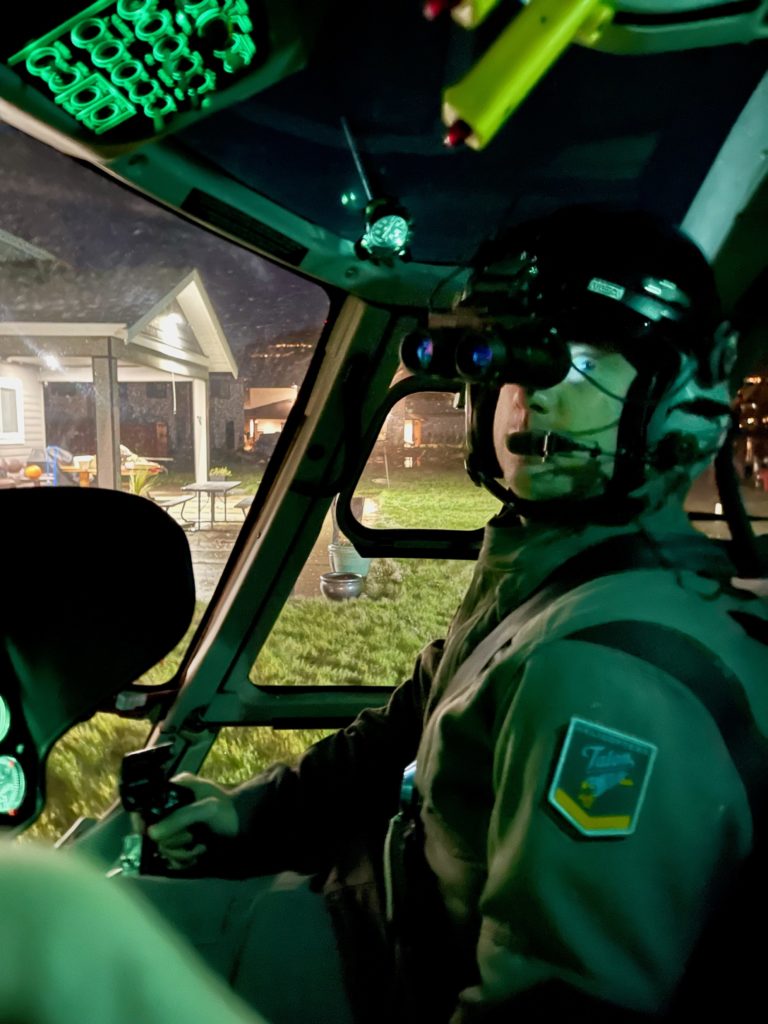
Fortunately, the Vancouver area has the highest concentration of commercial helicopter operators in Canada. Many of those companies stepped in to begin rescue operations. Aside from Talon, Ascent Helicopters and Blackcomb Helicopters both began to move stranded people to safety or across floodwaters so they could make flights out of Vancouver, access medical care or for other urgent reasons.
“We just carried on because we started getting calls from our regular customers and others affected by this and we were actually booked and then [EMBC] called us saying we needed to get up because people were trapped on their rooftops and they need the hoist machine,” Murray said. “We’re booked now. It’s 11 o’clock in the morning, three days into a flood and you guys have not booked us.”
Talon eventually decided to release the Dauphin and make it available for rescues, he said.
On Nov. 15, three days after the storm began dropping unprecedented rain on B.C., Talon sent the helicopters to the Nicola Valley northeast of Vancouver to pluck stranded residents from their rooftops. On Tuesday, Talon’s Dauphin and an AS350 B2 AStar returned to the valley where at least 120 people were thought to be stranded. At 2 p.m., EMBC released Talon from rescue duty but later recalled them to perform one more night hoist. After that, Talon began taking calls from its regular customers, helping them where needed, instead of relying on tasking from the authorities.
“What’s upsetting to me is for decades we have provided free helicopters to train for these kinds of events and we do our share, but what they don’t train on is how to make things happen fast,” Murray said. “We all know and those experts should know that it’s going to flood and when it floods, there are going to be people trapped. There are going to be people stuck in their homes. There’s going to be injured people.”
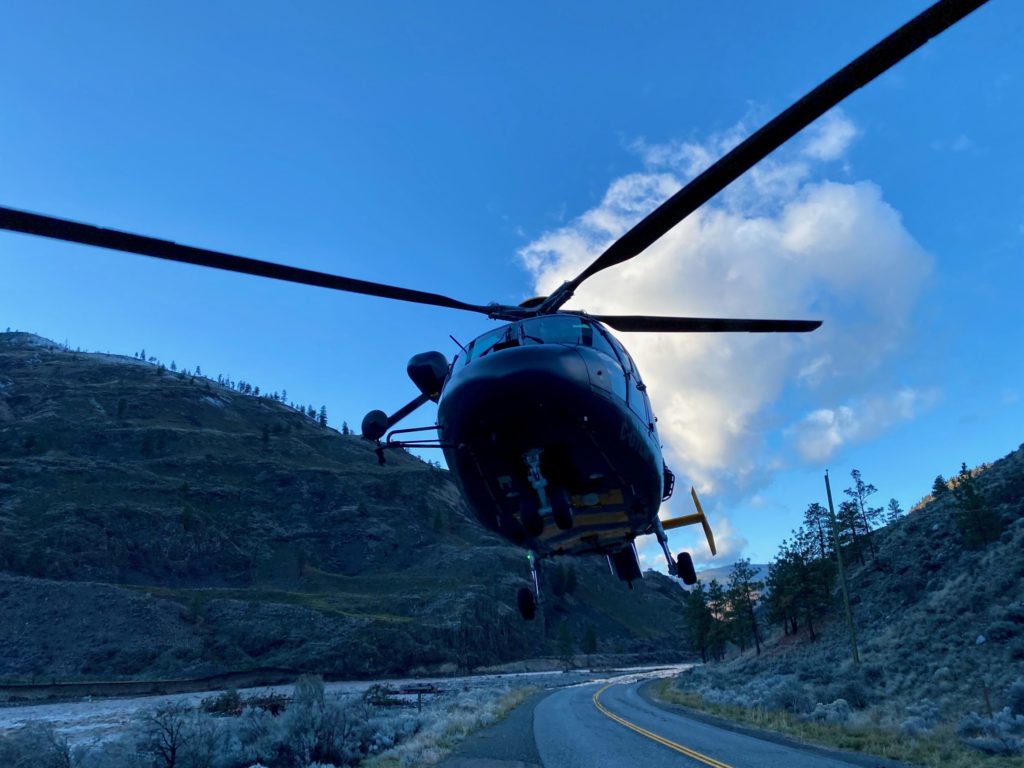
Provincial Minister of Public Safety Mike Farnworth, at a press conference on the disaster response held Nov. 17, was repeatedly asked about the delayed government mobilization and whether alerts and other precautionary measures should have been enacted earlier than they were.
“While the province has been able to take all necessary steps to respond to the emergency to this point, the next steps in this response may necessitate extraordinary measures only available through this declaration,” Farnworth said. “The reality is this weather event was unprecedented. Even though we were expecting heavy rainfall, significant rainfall, it was beyond what any of us expected. Even the experts were completely surprised by it.”
Asked why the province did not use its Alert Ready System, instead relying on local authorities and volunteers to issue emergency warnings, Farnworth passed the buck to local communities he said are responsible for requesting the system be activated.
“The Alert Ready Systems is something that is a tool,” Farnworth said. “It is not a silver bullet. It is intended to be able to very much localized focused alerts. . . . It has a place.”
The system is activated “on the advice of affected communities,” and not from the top down, Farnworth said. Many individual communities have their own alerting systems in place, he said. Abbotsford, British Columbia, apparently considered issuing a broad area alert at one point, but decided against it in order not to panic citizens and overburden emergency response resources already working around the clock, Farnworth said. Volunteers instead decided to go door-to-door to alert residents of Abbotsford of the danger and the need to evacuate.
“That how these decisions need to be made, by the experts on the ground,” Farnworth said. “Not by experts on Twitter, but experts on the ground dealing with that local situation, understanding the local conditions. I will always take their advice on when and how to deploy alerts and when and how to deploy resources.”





